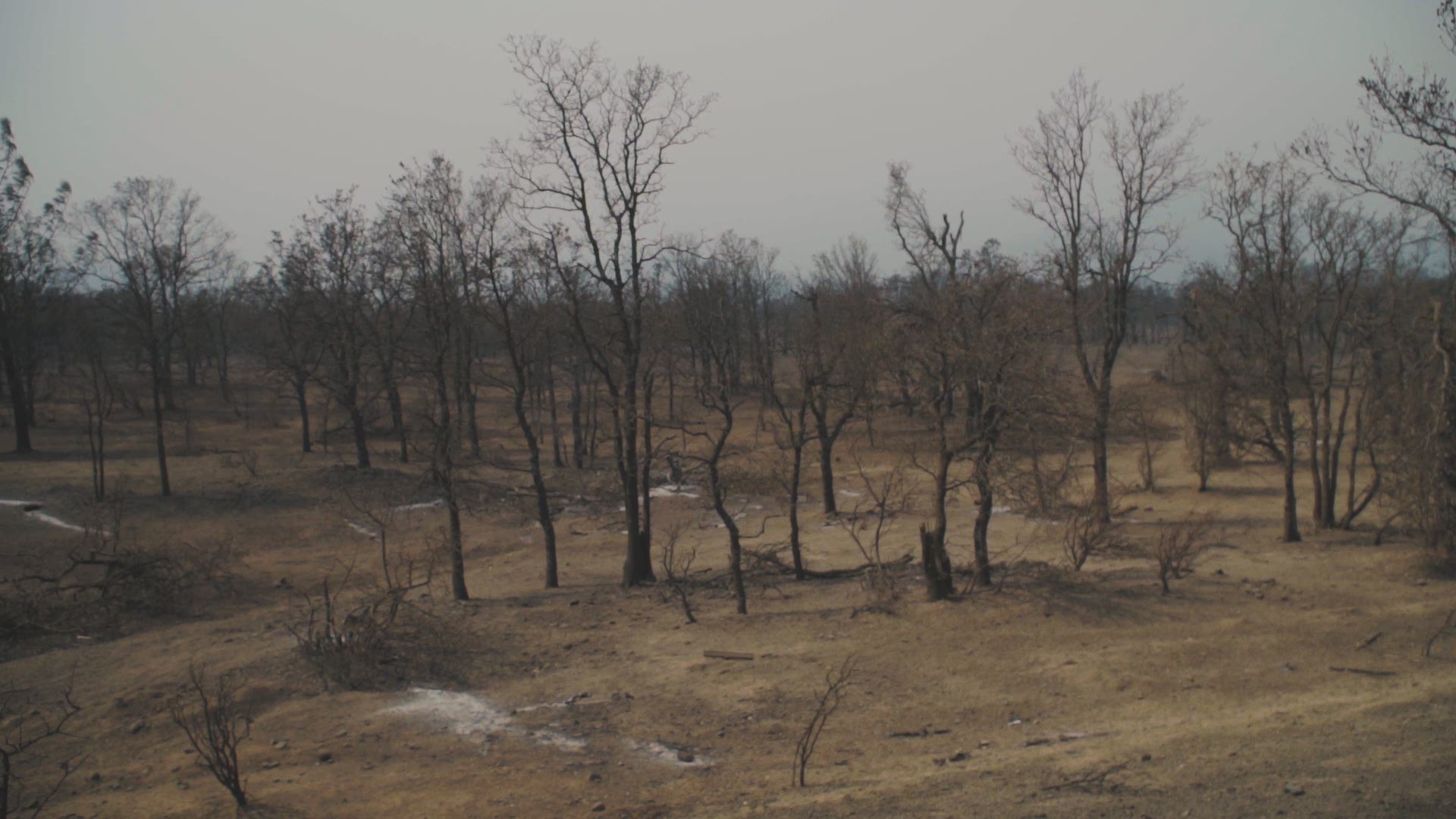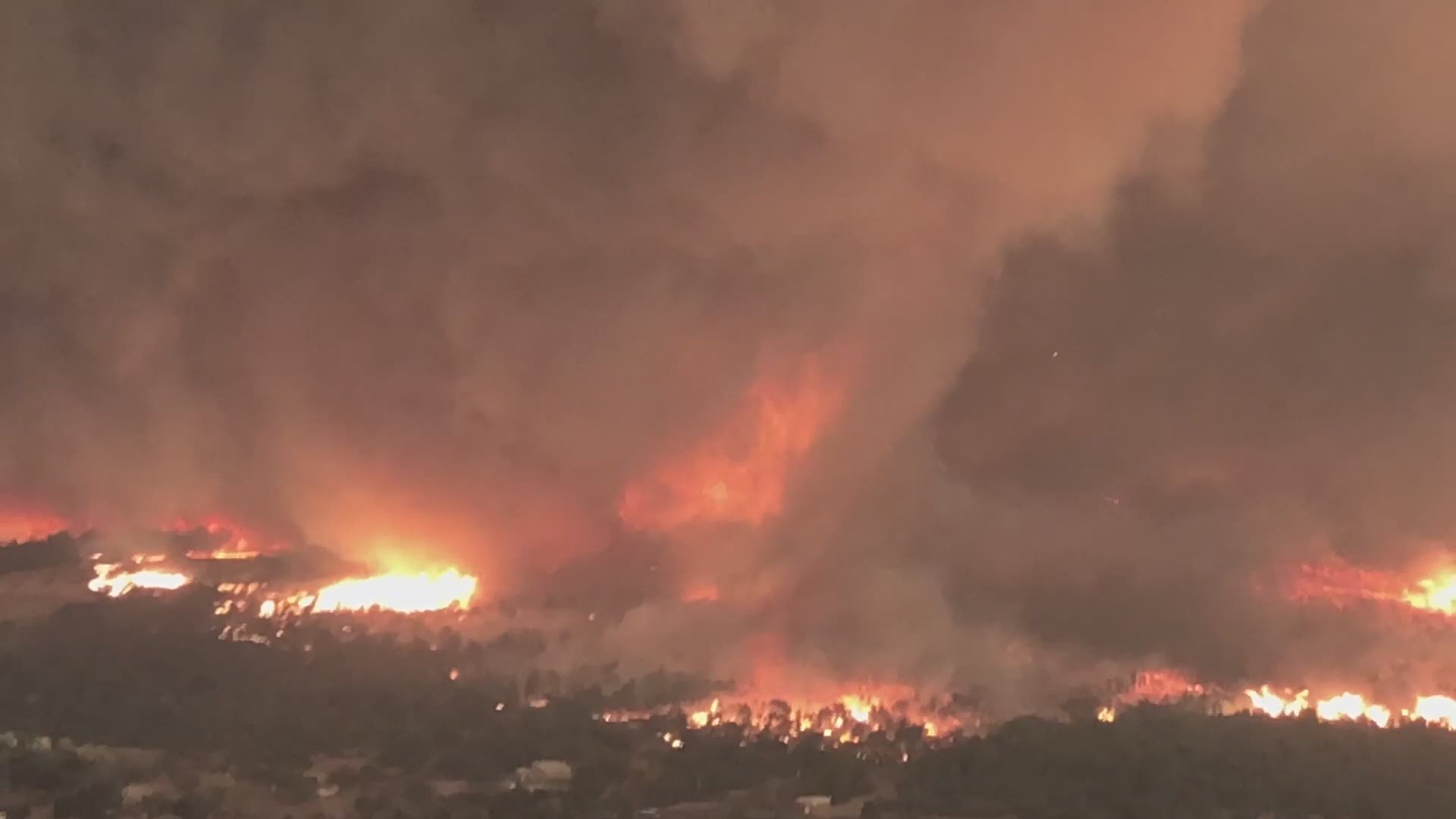A powerful fire tornado trapped a firefighter who died last month while battling a devastating blaze in northern California, according to a report released Wednesday.
The report describes events leading up to the death of Redding firefighter Jeremy Stoke and a chaotic scene immediately afterward as bulldozer operators tried to withstand the fire tornado that blasted into west Redding.
The 18-page report, prepared by the California Department of Forestry and Fire Protection, also describes how 81-year-old bulldozer operator Don Ray Smith lost his life in the Carr Fire.
The report gives this dramatic sequence of events on July 26 when temperatures tied a daily record of 113 degrees in Redding:
Stoke, 37, a fire prevention inspector, was conducting welfare checks that day with other firefighters at Salt Creek Heights, a newly built subdivision in west Redding. That evening, the fire crossed the Sacramento River.
At 7:35 p.m. PDT, Stoke went to the Land Park neighborhood just as the river-jumping fire burned into it, along with nearby Stanford Hills.
Three minutes later a Cal Fire captain, looking north from Land Park, saw the fire tornado swirling near a segment of Buenaventura Boulevard that connects Land Park to Keswick Dam Road.
Three bulldozer operators, not including Smith, found shelter from the advancing fire beside cut banks on Buenaventura.
At 7:39 p.m., Stoke, identified in the report as "FPI1," was driving south on Buenaventura between Lake Keswick Estates and the Land Park/Stanford Hills subdivisions.
One minute later, he broadcast a mayday on his fire radio.
"FPI1 identified himself by his radio call sign, and stated that he needed a water drop and was getting burned over," the report said.
A second transmission immediately followed, with Stoke repeating he was in the middle of the road, getting burned over and needed a water drop.
An engine captain tried to contact Stoke to get his location. "There was no response," the report says.
A fire captain and a battalion chief talked face-to-face to confirm they heard Stoke's radio calls. About the same time, the dispatch center tried to locate Stoke by pinging his cellphone.
Meanwhile, a Cal Fire supervisor was driving along Buenaventura to lead residents out of Land Park and Stanford Hills. As these evacuations were occurring, the fire tornado approached the River Ridge subdivision east of Buenaventura.
Just after 8:02 p.m., the three bulldozer operators who were going north on Buenaventura toward Keswick Dam Road got caught in the violent weather.
"Approximately one-half of a mile from Land Park, all three dozers were violently impacted by flying debris, rocks, embers, smoke, and intense heat," the report says.
"As hot air entered the cab of Dozer 2, the operator repositioned the dozer and parked next to Dozer 3. When Dozer 3’s windows shattered, airborne glass entered the operator’s eyes. Dozer 3 stopped on Buenaventura Boulevard and deployed his fire curtains."
Elsewhere and earlier that evening, Smith arrived at the Buckeye Water Treatment Plant in his dozer about 5 p.m. and went about improving a fire-break line toward Spring Creek Reservoir as the blaze started picking upe.
A crew leader tried to contactSmith over a radio "to tell him to 'get out of there.' "
Two firefighters left on foot to contact Smith but were turned back by flames.
Smith finally was able to make radio contact and said he couldn't get out because the fire had cut him off.
Just after 5:45 p.m. Smith asked for water drops. Several Cal Fire helicopters made drops through smoke as the fire conditions worsened.
A helicopter coordinator, looking through a clearing in the smoke, saw Smith's bulldozer engulfed in flames. At 7 p.m., a fire captain made it to the dozer line and confirmed Smith had died in a burn-over.
Investigators found Smith's fire shelter behind his dozer seat and the fire curtains weren't deployed, the report says.
The report's authors describe the fire tornado as a large, rotating fire plume that measured about 1,000 feet in diameter at its base, with winds ranging from 136 to 165 mph, the equivalent of an EF-3 tornado.
The report lists a number of safety issues encountered in the fire and some lessons learned, including:
"Firefighters must recognize the wildland firefighting environment is becoming more extreme due to a combination of a changing climate, overly dense and dry fuels, changing weather patterns, and continued growth of communities into fire-prone landscapes."


